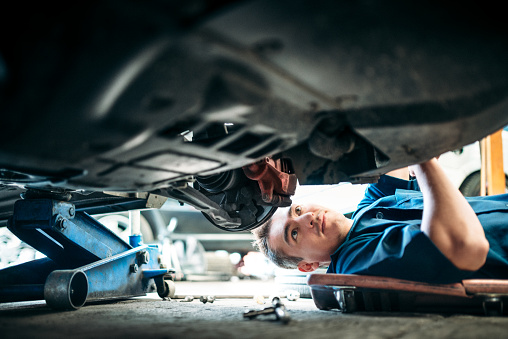November 11, 2024
How Do Car Brakes Work
Car brakes work by converting the kinetic energy of a moving car into thermal energy through friction. There are several components involved in the braking system, including the brake pedal, brake lines, brake calipers, brake pads, and brake rotors.
When you press the brake pedal, hydraulic pressure is applied to the brake lines, which forces the brake calipers to clamp down on the brake rotors. The brake pads, which are located inside the calipers, then come into contact with the brake rotors, creating friction and slowing down the rotation of the wheels.
The friction between the brake pads and the brake rotors generates heat, which is dissipated through the surrounding air. As the car slows down, the brake pads gradually wear down and need to be replaced periodically.
Some modern cars also feature anti-lock braking systems (ABS), which use sensors to detect when a wheel is about to lock up during braking. If a wheel does start to lock up, the ABS system will rapidly release and reapply the brakes, allowing the driver to maintain control of the car while still slowing down.
Overall, the braking system is a critical component of a car’s safety, and it’s important to keep it well-maintained to ensure it functions properly when you need it most.
Common Car Brake Problems to Be Aware Of
There are several common brake problems that car owners should be aware of. Here are a few of the most common ones:
- Squeaking or grinding noises: If you hear a squeaking or grinding noise when you apply the brakes, it could be a sign that the brake pads are worn down and need to be replaced. Ignoring this issue could cause damage to the brake rotors, which can be more expensive to repair.
- Soft or spongy brake pedal: A soft or spongy brake pedal can be caused by air in the brake lines or a leak in the brake system. This can reduce the effectiveness of the brakes and make it harder to stop the car.
- Vibrations or pulsations: If you feel vibrations or pulsations when you apply the brakes, it could be a sign that the brake rotors are warped or damaged. This can cause uneven wear on the brake pads and reduce the effectiveness of the brakes.
- Warning lights: Most modern cars have a dashboard warning light that will illuminate if there is a problem with the braking system. If you see this warning light, it’s important to have your brakes checked as soon as possible.
- Reduced stopping power: If you find that it takes longer to stop your car than it used to, it could be a sign that the brake pads are worn down or that there is a problem with the brake system. This can increase the risk of accidents and should be addressed immediately.
If you experience any of these brake problems, it’s important to have your brakes inspected by a qualified mechanic as soon as possible to avoid further damage and ensure your safety on the road.


